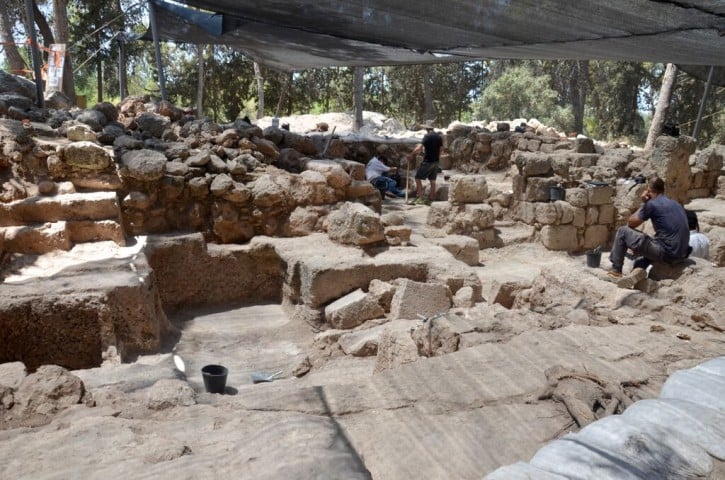
An aerial view of Horbat Ha-Gardi.
Photo: Griffin Aerial Imaging, courtesy the Israel Antiquities Authority.
Archaeologists may have finally uncovered the lost tomb of the Maccabees, Jewish warriors who led a successful rebellion against Greek rule in the second century BC.
Experts are taking a second look at a tomb at Horbat Ha-Gardi, near the ancient city of Madi’in. Over a hundred years after it was first discovered, the Israel Antiquities Authority (IAA) has resumed long-abandoned excavations at the site.
First discovered in the late 1800s, the site’s similarities to historical descriptions of the Maccabees’ final resting place were immediately recognized. Researchers at the time even went so far as to claim “there is no room for doubt. I found the Tomb of the Maccabees.”
Archaeologists clean a burial niche at Horbat Ha-Gardi.
Photo: Dan Shachar, courtesy the Israel Antiquities Authority.
In Antiquities of the Jews, a 2,000-year-old manuscript by Josephus Flavius, “the tomb was described as a tall, impressive structure surrounded by columns; it was said to overlook the sea and was built of fine stones and was covered with pyramid-like roofs,” according to a statement by the IAA.
Early assumptions about the tomb were quickly challenged when Charles Clermont-Ganneau, a French scholar of the time, found a mosaic floor decorated with a Byzantine cross, indicating that the site had been built by Christians.
However, Clermont-Ganneau maintained that the site could still hold the fabled Tomb of the Maccabees, writing that “it is possible that this structure was built by the Christians, so as to commemorate the burial place of the Holy Maccabees, since they were exalted saints in the eyes of Christianity.” Nevertheless, excavations were soon abandoned.
Archaeologists at work at Horbat Ha-Gardi.
Photo: courtesy the Israel Antiquities Authority.
Amit Re’em, an excavation director on the Authority’s new project, suspects the tomb was discovered by ancient Christians, who added the cross to identify the site as the burial place of important figures—namely the Maccabees. “What other important figures would be here?” he asked the AP.
Re’em and excavation director Dan Shahar admitted in a statement that their efforts had yet to yield conclusive evidence: “An excavation and a lot of hard work are still required in order to confirm that assumption unequivocally, and the riddle remains unsolved—the search for the elusive Tomb of the Maccabees continues.”